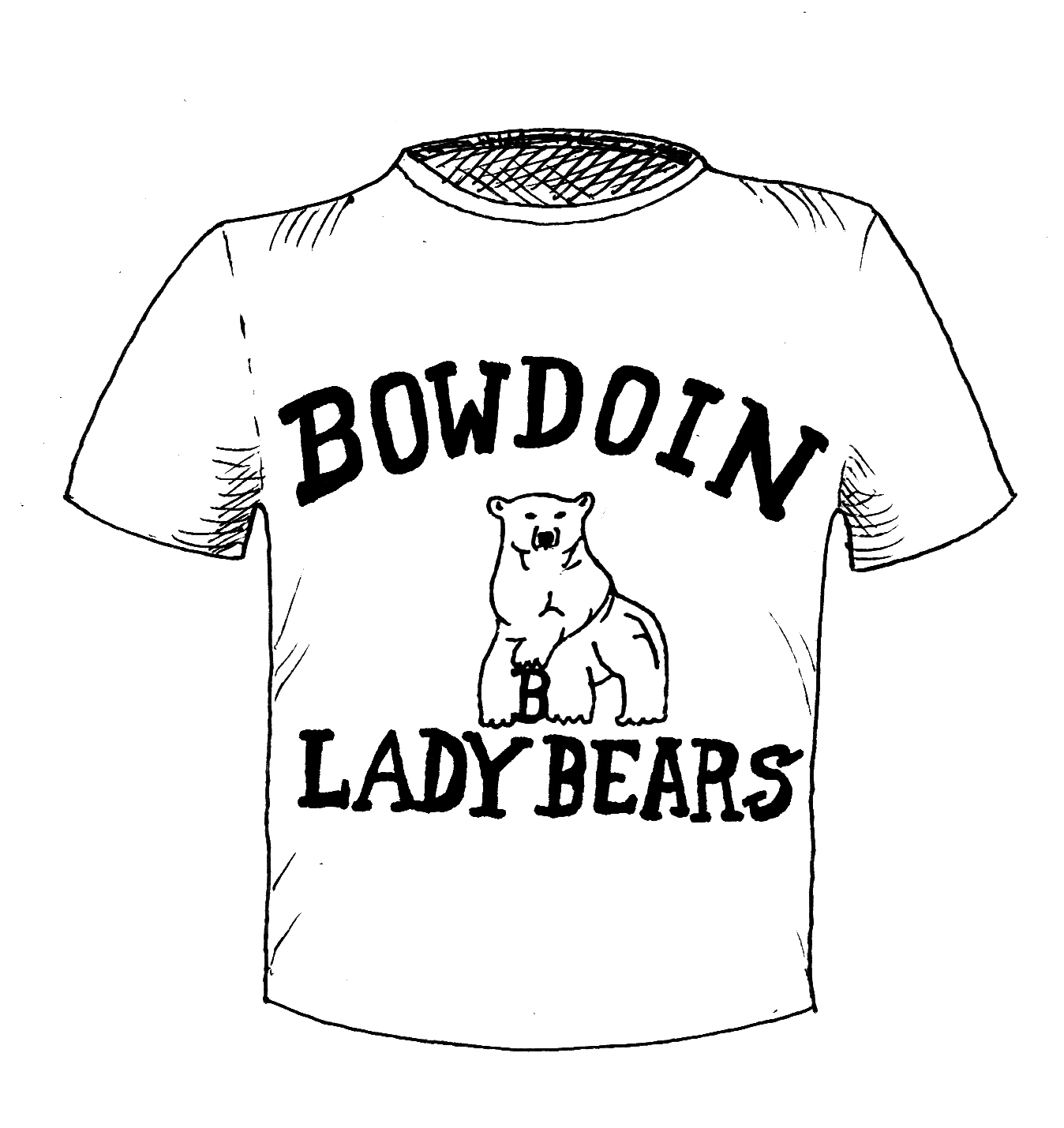A love letter to the Lady Bears
March 1, 2019
When women were first admitted to the College in 1971, they enthusiastically pushed their way into all aspects of campus life, especially the athletic arena.
As former Athletic Director Ed Coombs said in an Orient article from 1979, “I don’t think we or any of these schools [that went co-ed] anticipated the type of sports these women would want to play. They thought dance classes and that sort of thing would do it.”
But the women didn’t wait around for the Athletic Department to figure it out—they fought for new teams and programs, as well as proper coaching staffs and trainers.
As her Bowdoin Hall of Honor entry says, Ellen Shuman ’76 arrived in Brunswick in 1972 and “found a college with scarcely a women’s athletics program and no women’s swim team.” So, without missing a beat, Shuman joined the men’s team—and went on to set records, claim All-New England honors six times and become a New England champion. In her senior year, she became the only woman ever to reach the finals of the men’s New England Diving Championship, qualifying her for the men’s NCAA Division III Championship.
Joan Benoit Samuelson ’79, whose legacy extends far beyond little Brunswick, entered the arena around the same time. After dominating New England collegiate running during her time at Bowdoin, as well as playing for the field hockey team, Samuelson went on to win the Boston Marathon in 1979 and 1984 and earned gold in the first-ever Olympic women’s marathon in the 1984 Summer Games.
But Bowdoin’s women’s athletics program in the ’70s and ’80s didn’t just play host to a few star athletes, such as Shuman and Samuelson. Women wasted no time in not only starting programs but in excelling at their sports.
For example, when the women’s field hockey team was started in 1972, it busted out of the gates with an undefeated 6-0 season. Within five years, it had snagged back-to-back Midwest Association of Intercollegiate Athletics for Women (MAIAW) championship titles.
Throughout the Orient archives from this time period, you’ll find the tales of the new “Lady Bears”—or “Lady Booters,” “Lady Swimmers” and “Mama Bears”—dominating fields, courts, tracks and pools.
While such identifiers make me laugh and roll my eyes now and certainly wouldn’t find themselves in the pages of the Orient sports section today, there is something about the term “Lady Bears” that also feels unifying. Rallying around this name, you connect the female athletes of the ’70s, who broke down barriers to create their programs, to the female athletes continuing to build off their legacy today.
You tie the women’s soccer team, which in 42 years of existence has only had one losing season, to the women’s rugby team, which is the oldest collegiate varsity women’s rugby program in the nation and also has only ever had one losing season. You link Bowdoin field hockey—which earned the NESCAC championship title for six of seven years, as well as three national championship titles, from 2005 to 2011—with women’s basketball—which earned seven consecutive NESCAC titles starting in 2001, the first year the tournament was established.
From the Magee-Samuelson Track to Morrell Gymnasium, where the women’s basketball team will start its quest for the national title Friday evening, Bowdoin’s legacy of strong, defiant and excellent female athletes is on prominent display.
So I’d like to take this moment to appreciate the Lady Bears.
You’ve given me what will forever be my fondest memories of the College, from volleyball’s thrilling comeback win against Williams in the 2015 NESCAC championship to the student body threatening the structural stability of Morrell’s bleachers when women’s basketball took down Amherst this year, and everything in between.
I’ve been a sports reporter for the Orient practically my entire Bowdoin career, and I’ve been unbelievably lucky not only to follow our teams every season, but to meet and write about incredible women who inspire me as a journalist and as a fan.
Although in the rest of the world, women’s sports still don’t get the recognition—let alone the appreciation—they deserve, Bowdoin has given us all a little utopia, where no person on this campus can deny the sheer dominance of our women’s teams.
As graduation nears and I think about the things that will make me most proud about being a Bowdoin alum, I think of the Lady Bears. I will tout Bowdoin’s legacy for kickass women’s sports wherever I go.
Thank you, all of you, for showing us what it means to be a Polar Bear.
Anjulee Bhalla is a member of the Class of 2019.
Comments
Before submitting a comment, please review our comment policy. Some key points from the policy:
- No hate speech, profanity, disrespectful or threatening comments.
- No personal attacks on reporters.
- Comments must be under 200 words.
- You are strongly encouraged to use a real name or identifier ("Class of '92").
- Any comments made with an email address that does not belong to you will get removed.


Thank you for this! I played 3 sports at Bowdoin, and I went to Bowdoin because of the amazing balance of athletics and academics. I went to Bowdoin because as a D3 school I could play more than 1 varsity sport. What a great reflection and recognition for those who came way before my time (class of ’93). YES. we do love more than freaking DANCE. and we kicked mother loving a$$ doing it.
This was really cool to read, thanks for writing this!